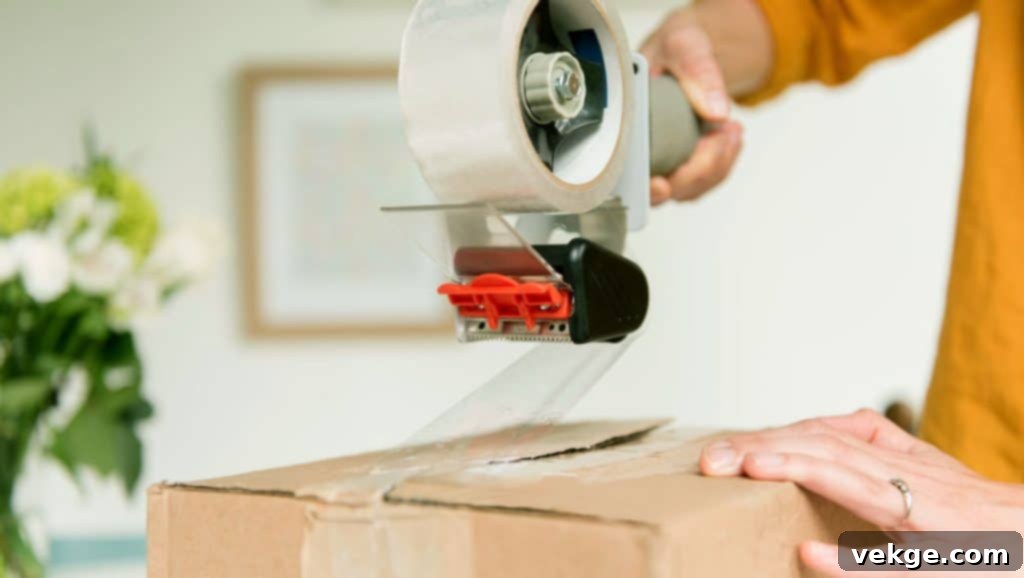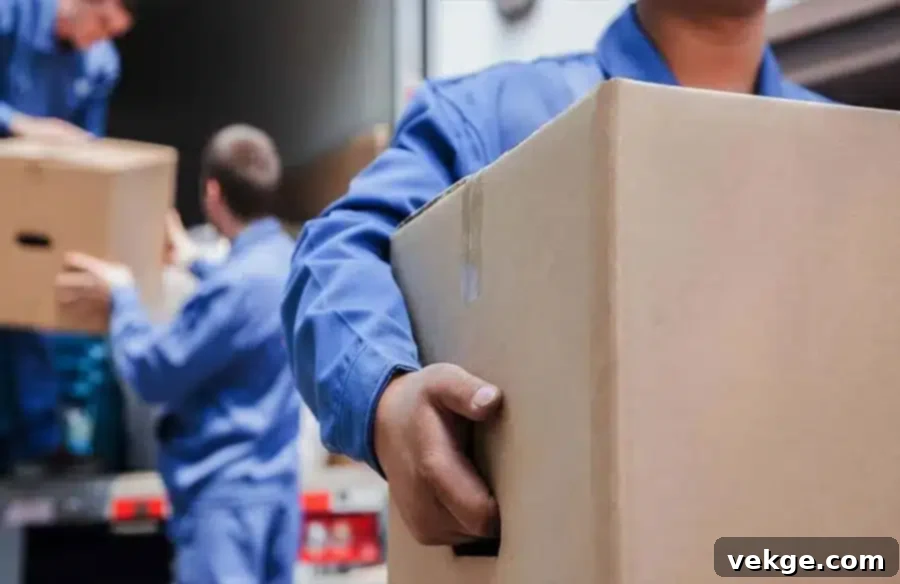Essential Guide to Long-Distance Moving: Costs, Preparation, and Tips
When faced with the decision of moving long-distance, the stakes can be high. Understanding the costs and preparing adequately is crucial. For first-time movers, frequent movers, and families in transition, grasping the complexities involved is essential.
This article aims to unravel the intricacies of long-distance moving, offering expert insights into costs, preparation strategies, and tips to ensure a seamless transition to your new home and community across state lines. By making informed decisions, you can navigate this new adventure with confidence. Let’s explore what you need to know to make your long-distance moving process smoother and more manageable.
Understanding the Costs of Long-Distance Moving
What Are the Main Drivers of Moving Costs?
 Several factors influence the cost of a long-distance move, and being aware of them helps you make informed decisions.
Several factors influence the cost of a long-distance move, and being aware of them helps you make informed decisions.
Distance and Destination
The primary cost driver is the distance between your old and new homes. For instance, a one-bedroom move from the Bay Area to Los Angeles may start at $2,700, while the same move to Phoenix could cost around $4,400 with next-day delivery.
Longer distances naturally incur higher costs due to increased fuel consumption, time, and vehicle wear. Remote destinations often lead to higher expenses due to limited accessibility, the need for specialized vehicles, and additional logistical challenges.
Volume and Weight
The weight and volume of your belongings also significantly impact moving costs. It is logical that the more items requiring a larger truck, the more fuel and labor are needed, increasing the overall expense. Careful planning and downsizing can help manage these costs effectively.
Time of Year and Demand
Timing is another crucial factor in moving costs. Prices fluctuate throughout the year, with peak seasons like summer being more expensive due to higher demand.
Many families choose to move when schools are out, and warmer weather makes the process easier, leading moving companies to charge higher rates during these times.
Types of Moving Estimates
Understanding the various types of moving estimates can help you choose the best option for your situation.
Binding Estimates
A binding estimate guarantees the final cost based on the initial survey of your belongings, providing financial certainty during your move. Even if your items weigh more or less than expected, the price remains the same. This helps avoid unexpected expenses, allowing you to plan your finances more effectively.
Non-Binding Estimates
A non-binding estimate provides an initial cost approximation, which may vary based on the actual weight of your belongings, distance, and additional services. The final cost could be higher or lower than the original estimate, depending on the circumstances of the move. This type of estimate is not guaranteed, and adjustments may be necessary to reflect the true expense of the service.
Binding Not-to-Exceed Estimates
A binding not-to-exceed estimate ensures customers remain within the original specified weight limit for their move. If the actual weight is less than agreed, the overall cost could be lower. These estimates are most effective when a mover has inspected your home and assessed the items in person.
What to Look for in Long-Distance Moving Quotes?
 Manager Nick from KZ2 Moving Company states, “Customers need to pay attention to delivery date promises. Some companies provide attractive rates by combining multiple households in the same truckload.
Manager Nick from KZ2 Moving Company states, “Customers need to pay attention to delivery date promises. Some companies provide attractive rates by combining multiple households in the same truckload.
The downside is that these companies cannot always fill the truck quickly enough, resulting in postponed deliveries. In extreme cases, customers aiming to save on moving costs during the low season may end up waiting months for their belongings.
Ask whether you will have a dedicated truck for your move or if you will be sharing a truck with others. Clarify the delivery date and how delays are handled. Some large companies might even include complimentary storage for a few weeks, adding flexibility to your move.”
Are There Any Hidden Fees?
Hidden costs can arise during the move, depending on whether your estimate is binding or non-binding or if it was a flat-rate estimate or hourly. Some common hidden fees may include charges for stairs, long carries, or last-minute changes to the moving plan.
For example, if your new home has multiple flights of stairs or long hallways, movers may charge extra for the additional effort required. It’s wise to discuss these potential costs with your moving company beforehand to avoid surprises.
Other fees may include:
- Packing and Unpacking Services – Hiring professionals to pack and unpack your belongings adds to the overall cost.
- Storage Fees – If you need temporary storage for your belongings, fees may apply, varying based on item volume and storage duration. Some transporters may offer short-term complimentary storage.
- Insurance and Liability Coverage – Moving companies offer different levels of insurance and liability coverage to protect your belongings during transit. Options range from basic coverage to comprehensive plans covering the full value of your items.
Obtaining Accurate Moving Quotes
Is a Flat Fee Better?
 “Long-distance moves can carry a lot of uncertainty for both the mover and the customer. That’s why it is important to agree on the price in advance.
“Long-distance moves can carry a lot of uncertainty for both the mover and the customer. That’s why it is important to agree on the price in advance.
It is not uncommon for movers to provide a sloppy estimate, leading to situations where not all items fit in the truck on moving day, leaving the customer with two options – leave some items behind or pay nearly double for an additional truck.
Many unpredictable events can occur on the road, from flat tires to weather conditions and accidents causing traffic delays. Therefore, a flat fee provides peace of mind during the move,” emphasizes Nick.
Requesting Quotes from Multiple Movers
Always contact several moving companies to request quotes so you can compare and find a fair price.
If you are using a moving comparison platform, provide as much information as possible about your long-distance move. Include the size of your current home, the distance to your new location, and any special items that require extra care or services you may want to include.
In-Home or Virtual Surveys
Many moving companies offer in-home or virtual surveys to assess the volume and weight of your belongings, allowing them to present a more accurate estimate of the moving cost.
Nick explains, “A video call is acceptable, but an on-site visit is better as a specialist can take measurements of large items, doorways, staircases, etc., estimate the weight of the items, note hills, windy streets, parking situations, and approaches for the movers, and notice other factors that customers might not be aware of.”
Do I Need to Inform the Movers About Special Items?
If you have specific items that need special attention, such as fragile items or heavy equipment, it’s essential to inform the movers. This allows them to provide specific guidelines and cost estimates for these services and ensures that the items are handled properly with the right tools and materials.
It’s better for the moving company to be overprepared than to attempt to move an item without the necessary tools, which could lead to damage later on.
How to Choose a Reliable Long-Distance Moving Company?
Start by researching moving companies. In the U.S., companies involved in interstate moves must be licensed with the Federal Motor Carrier Safety Administration (FMCSA), which regulates the industry for safety and consumer protection. Always check customer reviews from reliable sources and contact the Better Business Bureau to gauge service quality.
Some red flags to avoid include:
- Companies without a physical address or licensing information.
- Companies that only provide estimates over the phone without a visual inspection of your belongings.
- Companies that request large deposits upfront.
Budgeting for an Out-of-State Move
A well-planned budget can help you manage your finances during the move. Start by listing all potential expenses you might incur, including hiring long-distance movers, purchasing packing supplies, temporary storage, and additional services like cleaning and packing.
If you need to stick within a budget, consider cutting back on what you need and what services you can eliminate. This approach allows you to stay financially prepared and avoid unexpected costs.
Preparing for a Long-Distance Move
Planning the Timeline
It is advisable to plan at least eight weeks in advance to give yourself enough time to complete all tasks without feeling rushed. However, your timeline will depend on your situation and how much time you have left before moving day. Within that time frame, you will need to fit in:
- Decluttering and sorting belongings
- Booking your moving company
- Gathering packing supplies
- Packing systematically and labeling boxes
- Moving on the day
Creating a Moving Checklist
There are many simple and efficient moving checklists available online. Creating one ensures that you don’t overlook any tasks and helps you stay on track during the stressful relocation process. It should include everything from hiring professional movers and reserving a moving truck to setting up utilities like electricity, water, and internet in your new home.
Don’t forget to update your address with important institutions, like your bank and the postal service, and to organize and label your boxes for easy unpacking. Taking the time to create a detailed moving house checklist can make your move less chaotic.
Packing and Organization
What Supplies Do I Need?
 Stock up on these basic and essential packing supplies:
Stock up on these basic and essential packing supplies:
- Moving boxes of various sizes
- Packing tape and tape gun
- Bubble wrap to cushion and protect items
- Packing paper
- Colored permanent markers
How Do I Go About Labeling and Inventory Management?
Labeling is crucial to ensure that everything ends up in the right place during the move. Maintain an inventory list to keep track of all your items. Label each box with its contents and the room it belongs to in your new home.
It’s even better if you can assign a color to each room and color-code your boxes and items accordingly. Also, remember to add the items to an inventory list; this list can be invaluable for organizing your belongings to prevent anything from getting lost or misplaced during the transition.
How to Handle Valuables and Fragile Items?
Pack valuables and fragile items separately, using appropriate packing materials such as bubble wrap, packing peanuts, and sturdy boxes.
Clearly label these items as “FRAGILE” to ensure careful handling. If you have valuable items that do not require special equipment for transport, consider moving these delicate items yourself to avoid potential damage or misplacement during the interstate move.
Managing Logistics on Moving Day
On moving day, ensure everything runs smoothly by coordinating with the movers and overseeing the process.
Coordinating with Movers
Confirm details and schedules with the movers well in advance. Ensure they have clear access to both your old and new homes for loading and unloading, including any necessary keys or gate codes.
Communicating Special Instructions
Provide the movers with any special instructions, such as handling delicate items with extra care or specific placement of furniture and belongings in the new home. This will ensure your valuable items are handled appropriately.
Supervising the Loading Process
Actively supervise the loading process and pay close attention to how fragile and valuable items are packed and loaded. If you have questions or concerns, don’t hesitate to offer guidance or ask questions to understand how items will be loaded.
What Should I Do if the Movers Are Late or Something Goes Wrong?
Dealing with delays or issues on moving day can be stressful, but there are steps you can take to manage the situation effectively. If the movers are running late, first contact the moving company for an updated estimate of their arrival time. Good communication is essential for understanding the situation and planning accordingly.
In the meantime, keep all relevant documents, such as the moving contract and inventory list, readily available for reference. If something goes wrong during the move, such as damaged items or missing boxes, document everything with photos and detailed notes. Report any issues immediately to the moving company and follow their claims process. Stay calm and remember that many issues can be resolved with patience and clear communication.
How Can I Ensure Everything Is Accounted For?
 This is where your inventory checklist can be your best friend. Check off items on the list as they are loaded onto the truck. This way, if anything is missing, you can spot it quickly on the list.
This is where your inventory checklist can be your best friend. Check off items on the list as they are loaded onto the truck. This way, if anything is missing, you can spot it quickly on the list.
It’s also wise to conduct a final walkthrough of your old home to ensure nothing gets left behind and that the property is in good condition. Check all rooms, closets, and storage spaces for items that may have been forgotten. Confirm that all appliances are turned off, windows are closed, and doors are securely locked.
Settling Into Your New Location
Connecting Your Utilities and Services
A significant part of settling in is ensuring you have essential services from day one. Set up utilities and services in your new home a week in advance, including electricity, water, internet, and cable. Transfer existing accounts where possible, such as banking, insurance, and utilities, to your new address to ensure continuity of services.
Additionally, set up any new accounts required in your new location, such as local gym memberships, healthcare providers, and internet or cable services. Knowing these services are connected will help you settle into your new home sooner and avoid interruptions.
Prepare for a New Climate
Before moving, research the climate of your new location to know what to expect year-round. Check average temperatures, humidity levels, and seasonal weather patterns. This helps you plan your wardrobe, packing for both extreme heat and cold, and rain gear if needed.
Adjusting to a New Community
Take the time to explore your new community with your family and get involved in local activities. In the first few days, find essential services and providers such as doctors, grocery stores, and healthcare options. Going for short walks to uncover new things in the local community will help you meet new people, learn about the area, and feel more at home. You can also join local clubs or organizations, attend events and festivals, and volunteer in your community to meet people with similar interests. Very quickly, you’ll start to expand your social network and find a sense of belonging, making your adjustment to the community smoother.
Cost-Saving Tips
Implementing cost-saving tips can help you stay within your budget.
Downsizing and Decluttering
Reduce the volume of items to be moved by downsizing and getting rid of items you no longer need. Donate or sell these items to make your move easier and offset some moving costs. A yard sale is a great way to quickly reduce your items while feeling good about giving your items a new lease of life.
Flexible Moving Dates
Opt for flexible moving dates or off-peak moving. By choosing to move during off-peak times, such as weekdays or in the middle of the month, you can often benefit from lower costs. Working with the movers’ schedule when they are less busy can help if you are willing to be flexible.
DIY Packing vs. Professional Packing
If time is on your side and money is tight, consider packing yourself to save on professional packing fees. However, ensure that you pack well for long-distance moves so that your items survive the trip. Remember not to overload boxes or make them too heavy for one person to lift, as this can hinder the efficiency of moving day.
Conclusion
Moving long-distance may seem overwhelming, but now that you understand the costs and how to prepare thoroughly, you can make your transition easier. This article has provided key insights into moving costs and estimates.
With tips on obtaining accurate long-distance moving quotes and how to prepare for your interstate move using a detailed checklist, organized packing supplies, and proper logistics on moving day, you are now equipped to confidently manage your own long-distance relocation.
Remember, preparation and informed decisions are your best tools for a smooth transition to a new state. Embrace this new adventure with positivity, and soon, your new home will feel just as welcoming as the old one.
